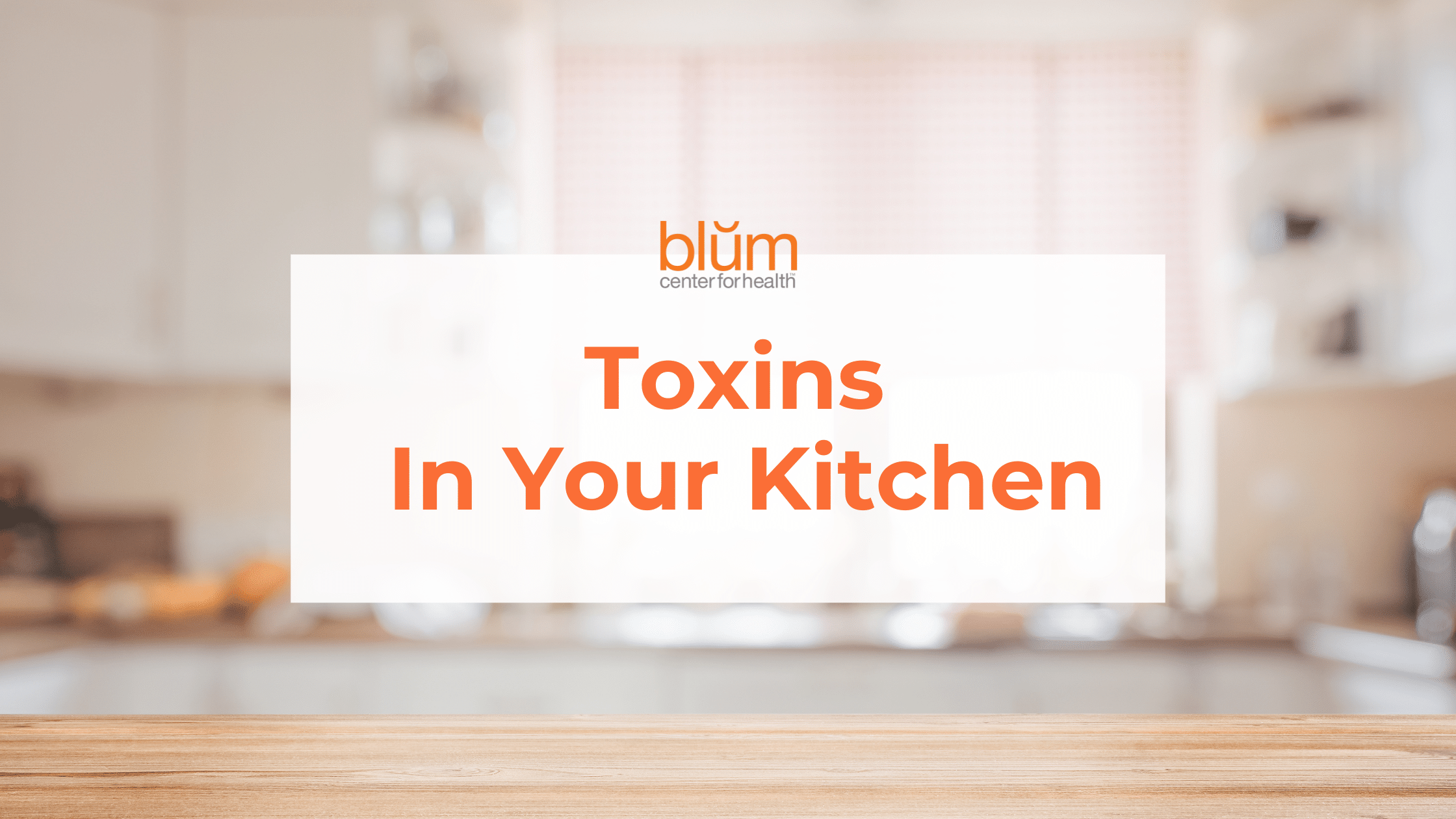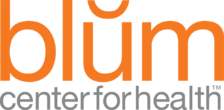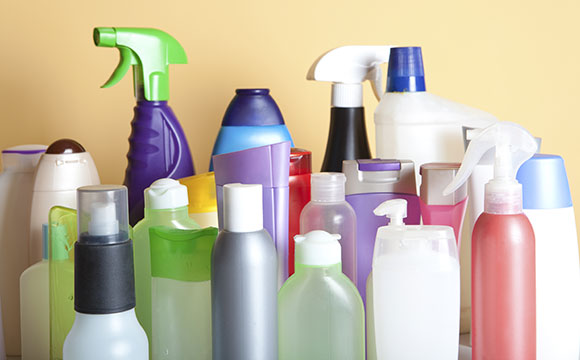
I would argue that the kitchen is the most important room of the house. It is where you are nourished, physically, and many times, figuratively. It is often the hub of the family. Highly trafficked and with no television in the background, it’s a room of connection. I can’t tell you the number of times I’ve gone to a friend’s home and we all hung out in the kitchen!
It’s also the one room in the house that’s a toxin dumping ground.
It sounds grim, I know. But, let me explain (and then we’ll explore what to do about it) …
Kitchens contain our fresh food, our drinking water, our packaged goods, our utensils, our cleansers, our dishware, our appliances. Toxins, unfortunately, lurk in all of them.
A toxin is any substance that can poison your body, negatively impacting your health. Exposure to environmental toxins can damage your endocrine system, immune system, nervous system and your digestive tract. They are a significant concern because they can contribute to chronic diseases by disrupting the body’s natural systems at a cellular level. To learn more about toxins, in general, and how they affect your health, check out this blog post:
Let’s take a deeper dive into food. After all, it’s the one constant day in and day out. You simply can’t live without it.
Did you know that an estimated 3,000 chemicals that have not been evaluated by the Food and Drug Administration (FDA) are present in the food you eat? The food industry is able to keep information about these chemicals secret by taking advantage of a loophole in the law that allows processed food companies to decide which chemicals are safe to use. This loophole is called the “Generally Recognized as Safe” (GRAS) system, which was enacted in 1958 and has not been amended. Ninety-nine percent (yes, 99%) of all food chemicals introduced since 2000 were greenlighted for use by the food and chemical industry, through this loophole.
JUST BECAUSE A PRODUCT IS FOR SALE, DOESN’T MAKE IT SAFE!
Here’s an interesting illustration of this problem. Here is a list of ingredients and foods that are banned in other countries. Check out these categories:
Chemicals applied directly to produce and animals that are banned in other countries:
– Arsenic – fed to chickens to promote weight gain.
– Chlorine-washed food, cleaning foodborne bacteria and other contaminants off poultry, fruits or veggies.
– Farmed salmon – fed synthetic astaxanthin, which is made from petrochemicals, to give the flesh an artificial pinkish-red color that we see in wild salmon.
– Genetically Modified Foods (GMOs) – most soy, beets, corn, canola, cotton, and alfalfa in the United States (U.S.) are GMO, and many countries have banned or regulated them due to public safety concerns.
– Going hand-in-hand with GMOs (because they are used in very high doses on GMO crops) are Herbicides, Pesticides and Fungicides, which are widely used on crops in the U.S. to keep them free of bugs and diseases. Of the 374 active chemicals authorized for agricultural use in the U.S. in 2016, the European Union (EU) banned 72 of them. Wow!
– Glyphosate – the primary ingredient in the weedkiller Roundup, is one highly-publicized example of a chemical banned throughout the world. Glyphosate consumption is linked to cancer. In fact, several people have won cases that alleged glyphosate caused their cancer.
– Atrazine – right behind glyphosate is the weed killer Atrazine. In the U.S., it is one of the most commonly reported contaminants in groundwater and public drinking water, according to the Environmental Protection Agency. Atrazine is applied to a wide range of crops, including sugarcane, soy, sorghum, and corn. It is estimated that over 65% of corn crops are treated with Atrazine.
– rBGH or rBST growth hormones – common in the dairy industry, many countries have banned these compounds.
– Ractopamine – a feed additive banned in at least 160 countries, including China, Russia and several others across Europe – is not only harmful to human health but cruel to the animals it is fed to. It is estimated that 60-80% of American pigs are treated with Ractopamine. The FDA has linked ractopamine to nearly a quarter-million reported adverse events in pigs (more than half of those pigs were sickened or killed) — more than any other animal drug. These pigs became lame or unable to stand, started trembling, or suffered a host of other ailments.
Food chemicals found as ingredients banned in other countries:
– Azodicarbonamide (ADA) – a carcinogen, used in baked goods as a bleaching agent. You’ll find it in bread products and snacks. You’ll also find it in yoga mats, flip flops and other plastics. It’s considered a chemical foaming agent.
– Potassium bromate – a possible carcinogen, used primarily in baked goods – think breads, tortillas, cookies.
– Brominated vegetable oil (BV) – used in soda and sports drinks and banned in more than 100 countries.
– Carrageenan – a thickener and emulsifier, carrageenan is most commonly found in dairy items like yogurt, ice cream, and cheese, as well as processed meats. It cannot be used in baby formulas in the EU.
– Food dyes – the following are either banned or must come with a warning label: Yellow dyes No. 5 & 6; Red dye No. 40. There are studies that show a link between food dyes and Attention Deficit Hyperactive Disorder (ADHD) in children.
– Titanium dioxide – a coloring additive found in candy, baked goods, and other packaged foods.
– Butylated hydroxyanisole (BHA) and butylated hydroxytoluene (BHT) – an additive used to prevent fats from going rancid and to preserve color, flavor and odor. They are added to breakfast cereals, butter, chewing gum and cosmetics.
– Propylparaben – an antimicrobial preservative used to extend shelf life. It is prevalent in many products including cakes, pastries, pie crusts, icing, jams, olives, pickles to name a few and is also found in moisturizers, shampoos, conditioners, cosmetics and shaving products.
Chemicals used in food packaging banned in other countries:
– Bisphenol-A (BPA) – This hormone-disrupting compound is toxic to human reproduction. Exposure to BPA has been linked to early-onset puberty, Polycystic Ovarian Syndrome (PCOS). It has possible effects on the brain and prostate gland of fetuses, infants and children; effects on children’s behavior and a possible link to increased blood pressure. It is commonly found in the lining of metal food cans, plastic food and drink containers, some water bottles, baby bottles, receipts from cash registers and dental sealants. Think BPA-Free plastic is the answer? Think again. The alternative has likely never been tested and plastics, in general, are proving to be a health problem, as you will see in the next two categories.
– Per- and polyfluoroalkyl substances (PFAS) – These chemicals are added to food packaging to make it resistant to oil and liquid. They are highly persistent, mobile, and toxic. PFAS have been linked to cancer, hormone disruption, liver and kidney toxicity, and harm to the immune system. They are found in non-stick cookware, grease-resistant food packaging like pizza boxes and take-out containers. They are also found in water-resistant fabrics and personal care products like dental floss and shampoo.
– Phthalates – a group of chemicals used to make plastic products softer and more flexible. They are used in food packaging and food preparation. They are linked to reproduction problems, birth defects, cancer, miscarriage and diabetes. Name a food and it is likely that phthalates are present.
These are just the chemicals banned in other companies. There are a host of other toxins found in our food, unfortunately. From other pesticides besides glyphosate and atrazine to mycotoxins such as ochratoxins, aflatoxins, zearalenone, fumonisins and trichothecenes to heavy metals, such as mercury, arsenic, barium, uranium, nickel, aluminum and cadmium. But now that you have this information, you can start the process of cleaning up your world!
IN THE MEANTIME, HERE’S WHAT YOU CAN DO ABOUT TOXINS IN YOUR KITCHEN
-– Read nutrition labels – Can you identify every ingredient? Another way to ascertain this is: Would your grandmother have each ingredient in her kitchen cabinet?
— Avoid animal products such as milk or meat in which GMO foods were used to feed the animals. Organic or grass fed meat and milk is the best choice. Look for labels that explicitly say, “grass finished” or “100% grass fed.” The term “grass fed” can also include grains and soy.
— Fiber is your friend! It helps bind toxins.
— Consume sulfur-rich cruciferous vegetables like Brussels sprouts, broccoli and cauliflower. They are great for your detox system!
— Avoid eating Genetically Modified (GMO) foods, which are directly contaminated with glyphosate, as well as other herbicides and pesticides
— Consider water filters or a filtration system that can remove or reduce pesticides and herbicides, including glyphosate from your drinking water. The more effective water filters are the “under the counter” models that use reverse osmosis
– Don’t use glyphosate (Roundup) or other pesticides in your yard. And go organic as much as (financially) possible in the produce you buy!
— Protect any food you are growing outdoors when chemicals are sprayed by neighbors.
Ready to turn your kitchen and your body into the sanctuary it deserves to be?
Join the 3-Day Toxin Reset where you will learn:
- Day 1: What are toxins and how they are connected to your health
- Day 2: Where in your past and in your daily life toxins are found
- Day 3: What you can do about it using food as medicine, supplementation and minimizing exposure
We begin Feb 25th! >>>> I’m In! <<<<
Resources:
https://www.pewtrusts.org/en/research-and-analysis/reports/2013/11/07/fixing-the-oversight-of-chemicals-added-to-our-food
https://www.ewg.org/news-insights/news/monsantos-gmo-herbicide-doubles-cancer-risk
https://www.businesstimes.com.sg/companies-markets/consumer-healthcare/quarter-pesticides-used-us-are-banned-eu
https://www.ewg.org/news-insights/news/monsantos-gmo-herbicide-doubles-cancer-risk
https://web.archive.org/web/20120316130312/https://www.epa.gov/teach/chem_summ/Atrazine_summary.pdf
https://www.livescience.com/47032-time-for-us-to-ban-ractopamine.html
https://www.verywellhealth.com/red-dye-40-adhd-5220957



